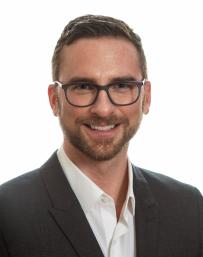Nature’s Role in CSO Control
By Joseph Danyluk

Amsterdam International Water Week (AIWW) November 6 – 9, brings together global water leaders to share best practices and bridge the gap between today’s challenges and future needs with water as an enabler to accelerate resilient and sustainable development. I am pleased to have the opportunity to participate in this important industry event to share our experience with and lessons learned from our work in combined sewer overflow (CSO) projects.
Overflows from legacy combined sewer systems negatively affect public health and the environment. As part of integrated, OneWater approaches to wet weather management, nature-based solutions are one way to reduce impacts from overflows and provide community benefits.
For the past 20 years, nature-based solutions have helped utilities and communities in North America with addressing negative impacts from CSOs. Also referred to as green stormwater infrastructure, low-impact development, natural infrastructure, or sustainable urban drainage systems, nature-based solutions rely on integrating plant and soil systems with human-made infrastructure to complement natural processes for managing and treating stormwater runoff. Nature-based solutions are an important tool in the toolbox of CSO mitigation solutions; however, there is no one-size-fits-all approach, and the success of these measures often depends on factors outside the control of a utility. In practice, the integration of nature-based solutions depends on the unique conditions of local catchments; the characteristics of the existing collection system; land use and development patterns; stakeholder priorities; and existing governance structures.
During a workshop I’m leading at AIWW, I will talk about Nature’s Role in CSO Control. In this session we will focus on natural systems and combined sewer systems – in particular, CSOs. In our sector, ‘natural systems’ and ‘combined sewer systems’ are two terms that don’t often overlap. In other sectors, they are two terms that probably don’t mean much.
Natural systems are what we had. No matter where we are in the world, at some point in history, there were watersheds…without us – without the concentrations of people, without the natural systems we permanently changed, without the impervious surfaces we built, and without vast infrastructure networks of pipes, tanks, plants, and ponds. Watersheds, without us, worked. They conveyed. They stored. They flooded. They treated. They recycled. They reused. They supported everything. The natural systems that made up the pre-settlement watershed were the true essence of the water cycle, the lifeblood of our planet.
In hundreds of cities around the world, combined sewer systems replaced these natural systems, and they made sense at one point in time. They removed used water from our cities, allowing us to exponentially reduce public health risks in dense urban areas. They also supported growth of our cities by replacing natural stream systems, opening up new land for development, and managing stormwater runoff – at least until we converted natural areas to rooftops and pavement, forever changing the watershed hydrograph. The impacts of a changing climate, in the form of increased frequency and intensity of rainfall events, are affecting peak flows to and capacities within our combined sewer collection systems, further exacerbating the problem and causing risks to public health and the environment.
Combined sewers and CSOs are part of a long, complicated history of wet weather management. Every year, billions and billions of gallons of stormwater, mixed with sewage, discharge to our waterways, untreated. I’m hoping we can expand how we leverage nature, through nature-based solutions, to reduce these impacts. Our communities and our environment deserve more. If we are spending money, ratepayer or taxpayer money, then we must consider all of the options to addressing this challenge.
I feel like we have a lot to share from our experience in the U.S. working collaboratively across the public sector, private sector, and communities to reduce impacts from CSOs. We’ve been through it. We’re going through it. We’ve built projects to not only control CSOs, but also to reconnect natural hydrologic patterns within watersheds and provide valuable co-benefits for communities. To achieve this, we’ve spent years studying the right soil mixes and the right plant types. We’ve formed unexpected partnerships. We strengthened inter-agency coordination with non-water sector partners. And in some cases, we did this spending less than the gray alternative. We also learned very important lessons about maintenance; about performance; about collaboration; about long-term costs; and about public expectations and perceptions.
We've also seen the tremendous benefits of combining nature-based and data solutions for CSO control. Jacobs Global Water Director Susan Moisio will also be attending Amsterdam Water Week and hosting a workshop that will highlight the best practices in managing and mitigating CSOs and the digital innovations available to tackle concerns such as safety, cybersecurity and workforce limitations. Her workshop is called 'AI on the Prize - Transforming aging infrastructure into more resilient systems with smart water solutions'. Don't miss it!
These solutions, lessons learned, and experiences transfer to projects across the globe. While we have more work to do, I am excited to share examples from the U.S. and learn more about what barriers utilities in other areas of the world, like Europe and the U.K., face with addressing CSOs. With this knowledge, we can uncover how OneWater approaches like nature-based solutions and digital innovations benefit our watersheds and our communities.
About the author

As Jacobs’ OneWater Director, Joseph Danyluk develops business, project delivery and thought leadership strategies focused on sustainable, equitable and resilient water management solutions. He works with communities and technical teams to develop and implement integrated solutions that not only provide near- and long-term benefits, but also demonstrate how water connects us and affects us all. For 20 years, he has supported clients with developing solutions for complex challenges affecting built and natural components of the water cycle.














































